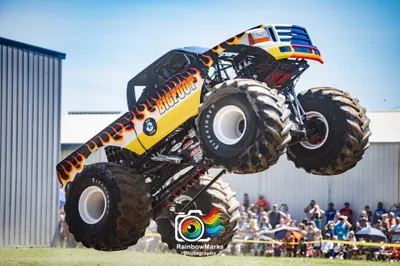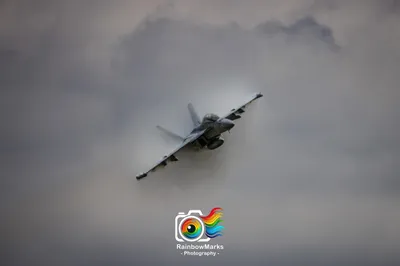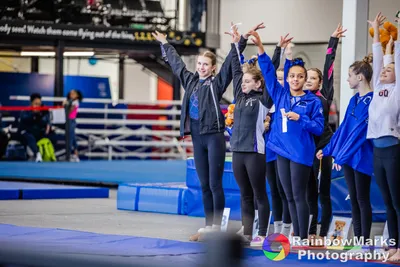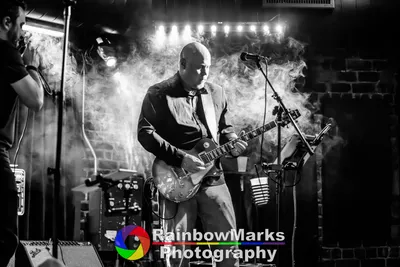Photos from the April 8th, 2024 Eclipse shot in Jackson, Missouri at the Trail of Tears State Park
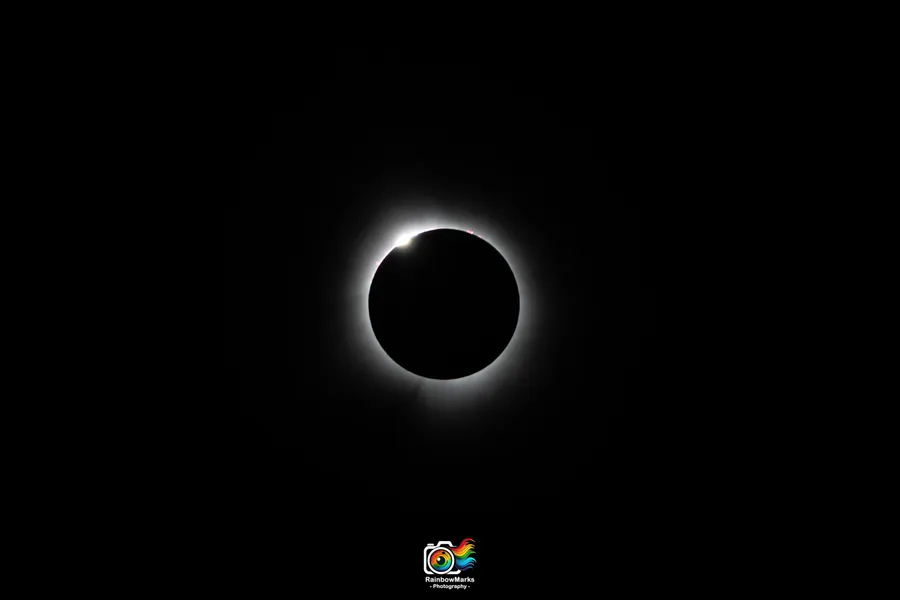
After experiencing the Total Eclipse passing over our home in Wildwood Missouri in 2017, we vowed as a family we would watch the next one together! For the 2017 event our oldest daughter was at school that day, maybe 1/2 mile away, but not with us. For the 2024 Eclipse we pulled both kids from school and hit the road just after 7am to head towards the path of totality. I was fearful of crazy traffic, but we left early enough that we avoided the morning chaos that would follow on I-55 southbound from St. Louis later in the morning.
Finding a place to watch the eclipse
I spent a few evenings trying to determine where to watch the eclipse from. I had a couple of criteria when searching.
- As much totality as possible: We were lucky that within a 2 hours drive south or east, we could find locations in the path of totality that had over 4 minutes of time.
- Clear skies: Both for weather and line of sight to the sun. There are a lot of places in Missouri where the sun can be blocked by the trees, finding a clear line of sight was important. Sunday the 7th I spent a few hours pouring over potential locations and weather forecasts. I did something similar in 2017, waking up a few times early in the morning trying to scout out locations with the best chance of no cloud cover, ultimately based on forecasts, we stayed home, making the right choice. For 2024 this wasn’t going to be an option, our house wasn’t in the path of totality.
Sunday evening I decided that Trail of Tears State Park outside of Jackson, MO would likely be our best choice, but I had a backup option of driving to a friend’s house in Illinois if something went wrong with the state park choice.
Getting down to the state park was relatively uneventful, morning traffic in St. Louis wasn’t too bad, though it did start to back up just before Festus going south, for what I believe was construction. We ended up hopping off the highway and taking 61 for about 8 miles before getting back on I-55 south. Other folks who left an hour or two later had a nightmare of non-stop traffic all the way south on I-55. We ended up getting to the park just before 10am and were able to find what I would estimate to be one of the final 20 spots available at the time. We parked down near the boatramp, which was perfect for us because our son was excited about fishing for a while in the Mississippi river while waiting for the eclipse.
Getting setup
We ended up deciding to watch the eclipse from right near our parked truck as opposed to finding a grassy spot to sit in. I wanted to keep our clear sky view and not have any trees blocking our view or any of the cameras I would be setting up. We packed lunch and snacks ahead of time, so beyond fishing and hitting the public restrooms we didn’t need to leave our spot for anything.
Equipment
For the eclipse I would be shooting with 3 cameras, though only one really counted. I setup two GoPro cameras on tripods, one a Hero12 set to record video for the entirety of the eclipse. The other a Hero9 that I set on a timelapse, taking a photo every 5 seconds.
My main rig for shooting the eclipse was my Canon R5. For a lens I had a 70-200m and a 2X extender attached. I attached a solar filter (same one I used in 2017) to the lens hood with rubberbands, this allowed me to quickly remove the filter during totality to get unprotected shots of the eclipse. The filter I used was an 8” Orion filter, though not as fancy as the ones currently on Amazon.
All three cameras were mounted on their own tripod, though none of them with any star trackers, maybe in the future I’ll have one of those fancy tools.
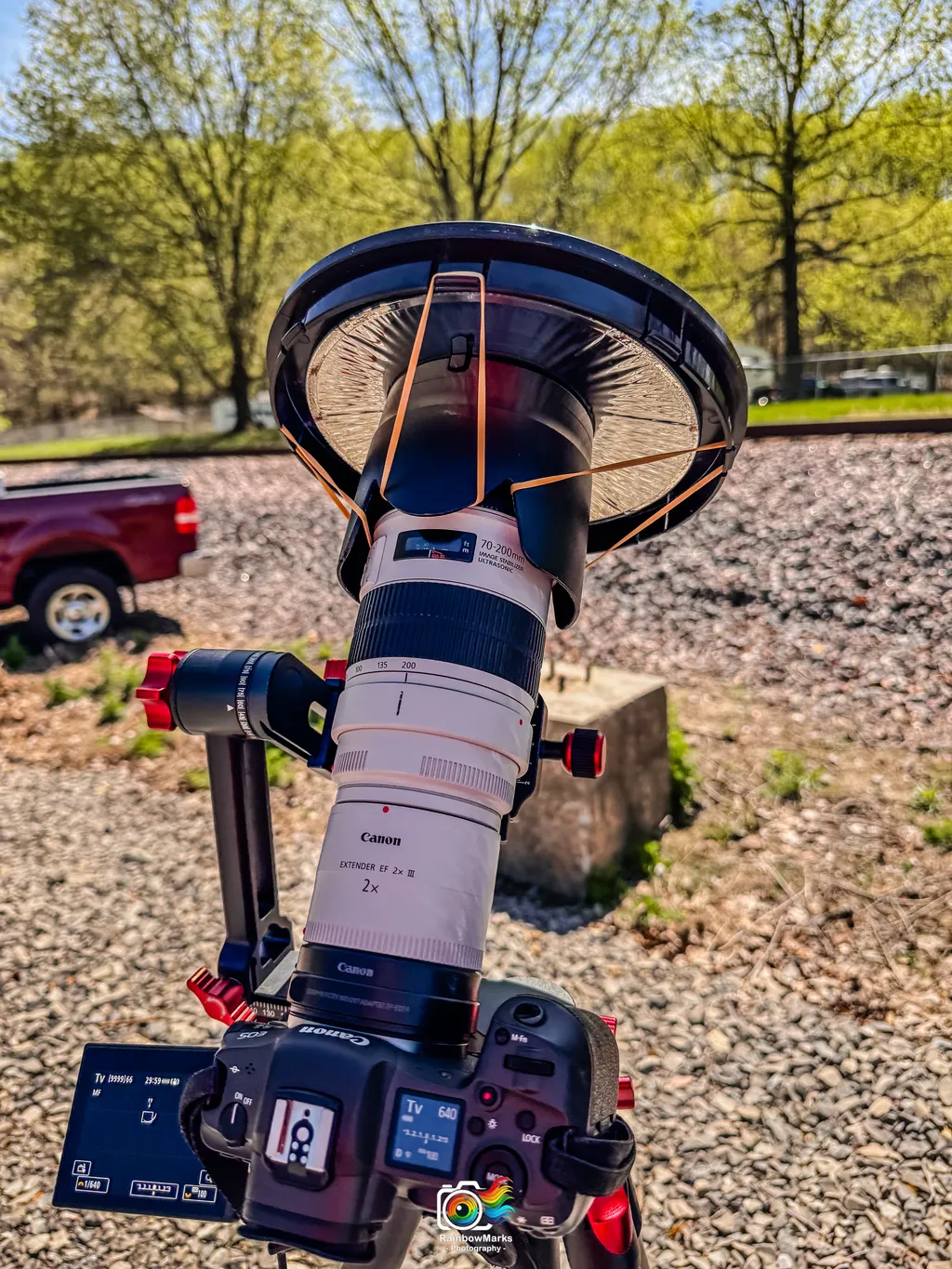
During the Eclipse
During the event I was running back and forth between my R5 and the family. Trying to get a variety of shots, but also trying to spend time with the family as well. I had my camera setup on shutter priority (TV), which means I was targetting adjustment of primarily the shutterspeed for the event. I shot a variety of speeds from 1/5 (of a second) up to 1/8000, though a majority of the shots and what worked were between 1/640 and 1/2500. For my ISO I shot at 100 pretty much the entire time.
The biggest struggle I had during the eclipse was focusing. I tried setting auto-focus to on but for that to work you always have to be centered on the sun, and that’s very difficult to do when running on a tripod with a long lens/extender. You don’t realize how quickly the sun moves until you watch it though a zoom. So for focusing I manually focused, though the real struggle there was the solar filter. The way I had it mounted on the lens hood (without the hood extended) meant getting to the focus ring with my large hands was difficult.
I ended up working with focus throughout the day, though I am not sure I was ever 100% happy with how I got it set, for the most part the photos worked out.
See and Purchase The Results
Now for the important part, the actual results! You can find the photos I have processed and chosen to post here on the page, as well as in our high resolution gallery available here. Most of the shots I’ve posted are during totality, though I have quite a few other stages. Bluntly, the other stages of the eclipse sort of get repetitive, while they make cool composition shots, I found them boring as individual shots so I didn’t post them for now.
You’ll find in the shots a couple of composites, where I merged together multiple photos to create something unique. All of these photos are available as prints, canvas and acrylics via our online gallery. If you’re interested in purchasing one of these photos in another format, please feel free to reach out.
You need to experience a Total Eclipse!
Experiencing a Total Eclipse is a profound, almost mystical event. While a partial eclipse is certainly memorable, achieving totality transforms the experience entirely. It’s something you truly have to see for yourself to understand the full emotional and visual impact. People travel thousands of miles for just a few minutes of this celestial phenomenon, and once you’ve witnessed it, you’ll understand why. To get a taste of what I’m talking about, check out this captivating 7-minute, 4K video of the eclipse. Totality starts around 1:16, and you can hear the awe and excitement in the crowd’s reactions. It’s a preview of the exhilarating experience that awaits you.
Give your feedback!
If you have any feedback on our eclipse photos, feel free to follow along and comment on our photos over on our Facebook page.
Upcoming Eclipses! Start Planning!
After the total solar eclipse on April 8, 2024, the next five total solar eclipses will be:
- August 12, 2026: Visible in northern North America, western Africa, and Europe.
- August 2, 2027: Visible in Africa, Europe, the Middle East, western and southern Asia.
- July 22, 2028: Visible in Southeast Asia, the East Indies, Australia, and New Zealand.
- November 25, 2030: Visible in southern Africa, the southern Indian Ocean, the East Indies, Australia, and Antarctica.
- March 30, 2033: Visible in western Europe, northern Asia, North America, the Pacific, the Atlantic, and the Arctic.



